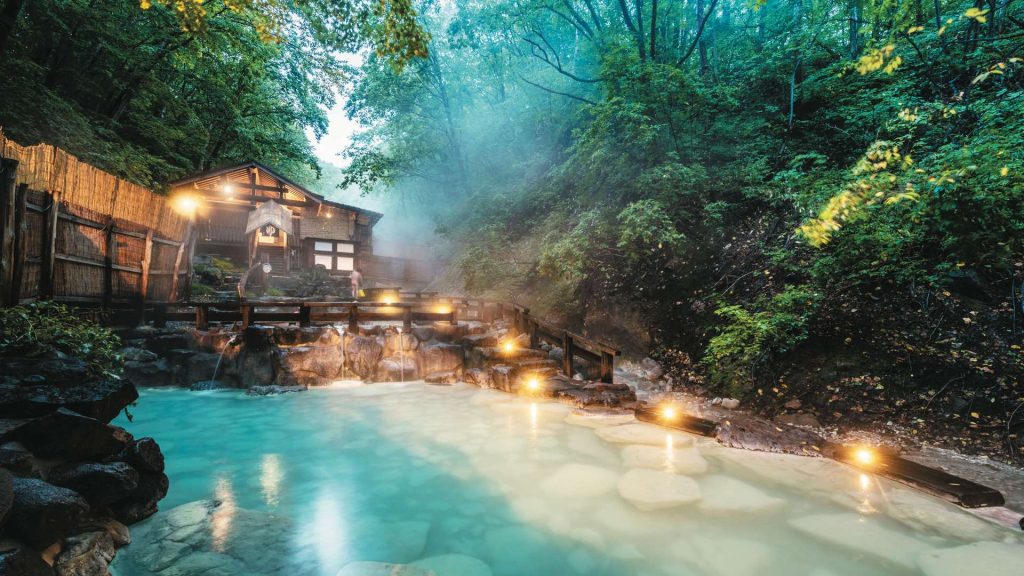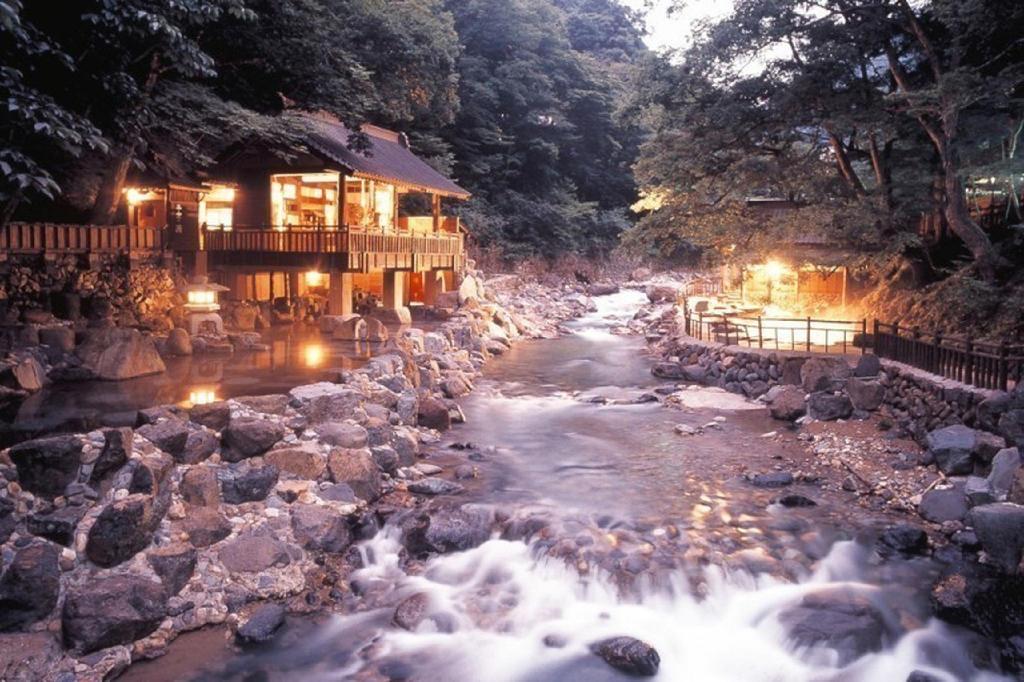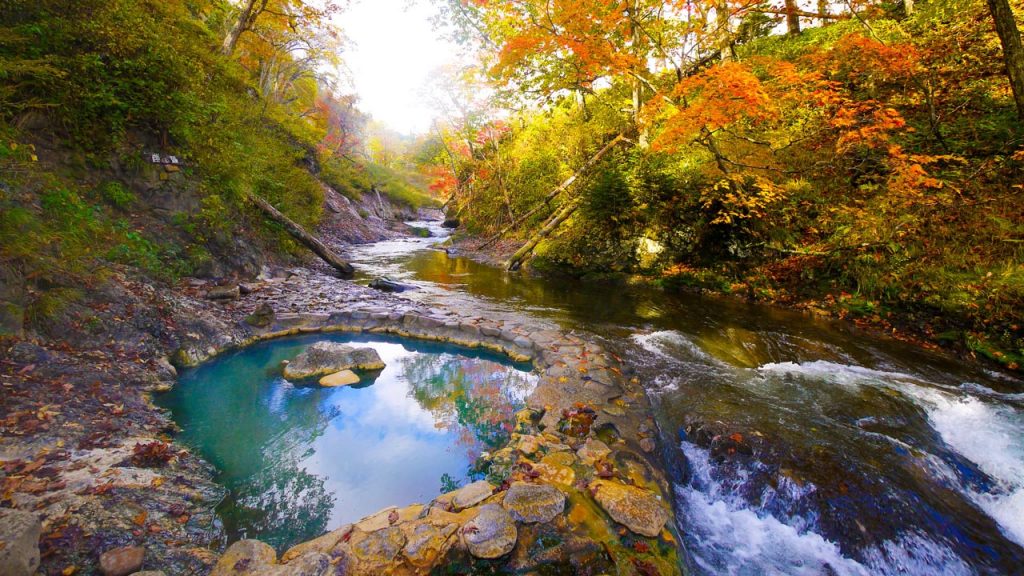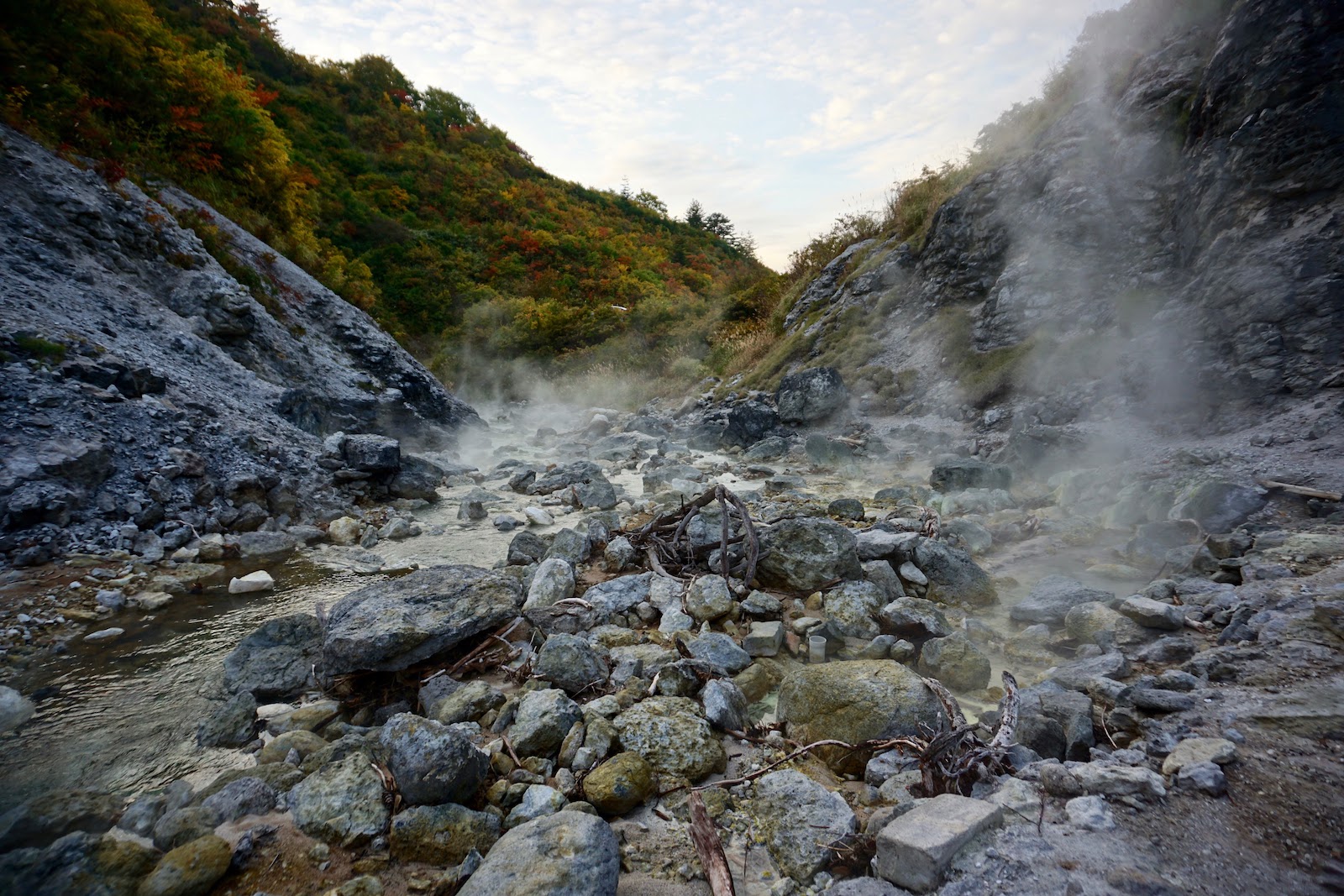An onsen 温泉 (“hot water spring”) is a natural hot spring public bath. But there are so many different types of onsen! Thanks to its plentiful volcanic activity, Japan has thousands of geothermal springs scattered all over the territory. Hot spring bathing is a distinctive and beloved part of traditional Japanese culture, popular with all ages and occupations. Public bathing also used to be the norm before modern apartments fitted with bathrooms became the norm.
Why you should absolutely try bathing in an onsen while in Japan
Nothing more relaxing or therapeutic than lying back in a hot bath after a long day… Especially when you’re surrounded by falling snow, on a beach, overlooking a beautiful mountain view, or listening to a river rushing past. If it’s you first time heading to an onsen, make sure to read up to the onsen etiquette.
Each spring has a different chemical composition, colour and smell, as well as supposed therapeutic benefits. The bathing facilities can range from luxurious spa complete with 12 sorts of jacuzzi, to a simple changing shack next to a hot waterfall (or no infrastructure at all in the case of wild onsens).

Often the baths are beautiful objects in themselves – made from materials such as cypress wood or granite, and surrounded by outstanding natural beauty or attached to lovely traditional inns. Exploring and discovering the best onsens across Japan can become an addictive pastime during your travels!
The basics: keywords and types of onsen
From simple local public baths, to luxurious spa experiences… there are many types of onsen. Here’s a few tips and vocabulary so that you know what to expect, and what to look for.
The presence of onsen is often indicated on signs and maps by the symbol ♨ , or characters ゆ or 湯 – yu, meaning “hot water”. Make sure that the bathhouse offers an outdoors bath or rotenburo: it’s the best part, as you can enjoy the hot bath as well as the fresh air and surrounding views. Unless you go to the onsen in the middle of a summer day!
Sento or 銭湯 is a public bathhouse where water is heated rather than coming from a hot spring, mostly in areas where there are no natural hot springs. The water likely has no minerals or special benefits. Sento used to be the public baths in the times when people had no baths. Many have closed, some are renovated and offer spa-style services, and yet others look the same as 50 years ago – visiting them is a very interesting experience in itself.
Look out for footbaths or ashiyu (足湯). Many towns with natural springs offer free benches and small pools to soak your feet in the hot spring waters. A great way to relax tired feet after a long walk! Bring your own towel, and try to wash your feet beforehand if there are any facilities.
Gender-separated or mixed baths
The wide majority of onsens are separated by gender. The entrance to the female baths is marked by the sign 女 and red curtains, whereas the male side will have the sign 男 and blue curtains.
However some natural or special onsen will have mixed-gender areas, in which case either everyone wears swimming suits, or only ladies. In some cases, ladies are allowed to wear special bathing towels/robes. Also, in the springs where the water is opaque from minerals, ladies can enter the water via a special modesty entrance hidden behind curtains, and then keep themselves submerged to the shoulders. Very elegant!

Different types of onsen baths
In addition to simple baths of different temperatures, many fancier bathhouses offer various additional features:
- jacuzzi, jet baths or waterfalls that provide a massaging action
- sauna, or even infrared sauna
- steam room, Turkish hammam style
- sleeping bath: shallow bath where you can lie down and relax
- hinoki bath: made from the Japanese cypress wood, these bathtubs look beautifully traditional, smell nice, and supposedly provide various antiseptic benefits
- electric bath: a weak electric current circulates in the water, supposedly good for your back… but rather unpleasant for most! Look out for warnings with characters 電気, meaning “electricity”.
- carbonated water bath: little bubbles gently tickle your skin, very pleasant!
- herbal baths: the water is infused with various herbs or flowers
- rock bath: lie down with yukata robes on a warm flat rock
- sand bath: in beaches with volcanic activity (for example Ibusuki in Kyushu), get covered in hot sand wearing a yukata and sweat it away for 10-15 minutes
An endless and delightful path of discovery!
Rent your own private onsen bath
For various reasons, you may prefer to rent your own private bath: because you want to bath with your opposite sex partner or the whole family, because you have tattoos, or any other reason. Many bathhouses offer the possibility to reserve a private bath for a limited duration. Private baths are usually called 家族風呂 (kazoku furo), or “family bath”.
This option is not necessarily much more expensive: the price can include 2 or 3 people, with extra fees for extra people. Best to enquire at the bathhouse.
– developed or wild: most onsens listed in this app are purpose-built bathhouses, but we also list a number of wild onsens, like a hot waterfall in the forest or a stone bath on the seashore, with no showers and maybe no changing rooms. You will find that these can be the most memorable bathing experiences of all.

How much do different types of onsen cost?
Price is a good indicator of what to expect: the more expensive, the more services. Although more expensive doesn’t always mean better: some of the most incredible onsen experiences will be in free wild spots near the seaside or in the mountains.
That said, as a rule anything below 500 yen is likely to be a simple local bathhouse: expect one or two indoors baths and maybe a small rotenburo, and bring your own shampoo and towels.
A price of 500 – 1000 yen usually means various kinds of baths, probably a nice outdoors space with a variety of rotenburo and soap/shampoo/lotion provided. Anything above 1000 yen is either a famous landmark, or likely to be in the “spa” category with beautiful surroundings, free towels, additional beauty treatments etc.
With the quantity of nice bathhouses all over the country, prices rarely go beyond 2500 – 3000 yen, so it remains a very affordable and accessible activity that most Japanese people enjoy several times a year, or even weekly.

Where to find onsen baths and how to visit them?
There is volcanic activity and hot springs all over the country, and most likely also near you. But many bathhouses are clustered around famous natural hot springs in onsen resort towns. Such town names will usually be followed by the word “Onsen”. Some of the most famous onsen towns include Hakone, Kusatsu, Beppu, Kinosaki, Nozawa ski resort, Ginzan Onsen and many more.
Some of these onsen towns retain a unique old-times charm – check out 6 of our favorites. Wondering how to find a certain type of bath? Download the Michi Japan app and use the filters to find exactly what you want.
Staying the night in a traditional ryokan inn and wandering between the public bathhouses, will likely be one of your most memorable experiences in Japan!
